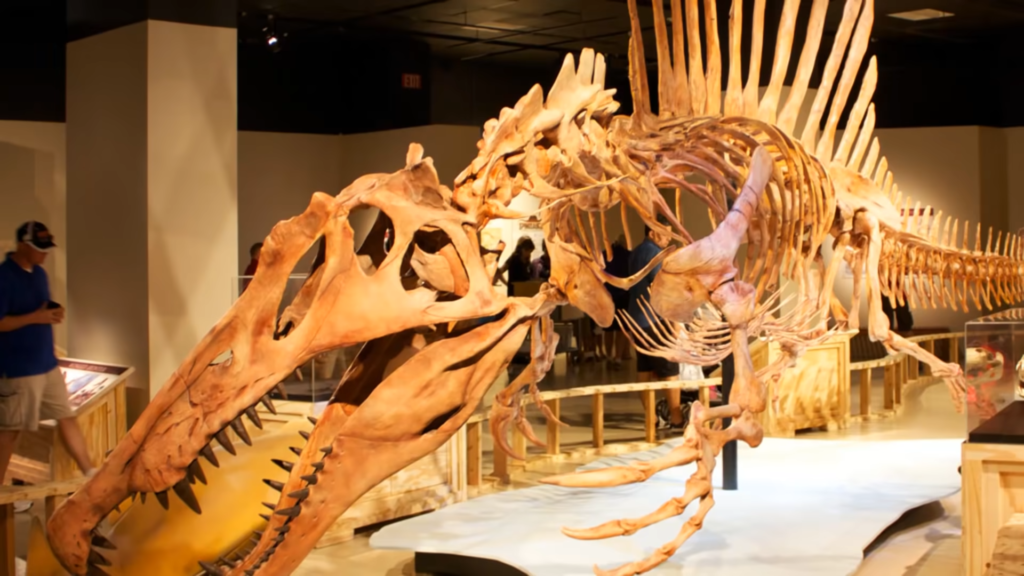Spinosaurus, the iconic dinosaur known for its sail-like structure and formidable presence, has undergone a remarkable transformation in our understanding. From being perceived as a typical theropod with a sail to being recognized as an extraordinary aquatic predator, Spinosaurus continues to surprise paleontologists with each new discovery. The latest revelation comes in the form of an almost complete tail specimen, shedding light on Spinosaurus’ aquatic prowess like never before.

Discovered in Morocco’s Cretaceous-aged Kem Kem Beds during a 2018 expedition led by Spinosaurus specialist Nizar Ibrahim, this tail specimen is a game-changer in our understanding of this ancient creature. What makes this discovery particularly significant is that the tail fossils appear to belong to a single individual, providing a reliable basis for reconstructing Spinosaurus’ tail morphology without the ambiguity of composite specimens.

The tail vertebrae exhibit tall neural spines and extended chevrons, indicating an adaptation for aquatic propulsion. This paddle-like structure suggests that Spinosaurus relied on its tail to maneuver through the water, similar to modern crocodilians and newts. Moreover, the reduction of processes towards the tail tip allowed for greater flexibility, enabling Spinosaurus to navigate with ease in aquatic environments.
To further validate these findings, scientists at Harvard University created a robotic reconstruction of the Spinosaurus tail and tested its effectiveness in a water tank. The results were astonishing, showing that Spinosaurus’ tail could produce significant forward thrust underwater, surpassing other theropod tails in efficiency. This experimental evidence supports the notion that Spinosaurus was well-adapted for an aquatic lifestyle, capable of swimming with remarkable agility.

However, the debate surrounding Spinosaurus’ aquatic abilities remains contentious. Some paleontologists question whether the tail could generate sufficient force to propel the dinosaur’s large body through the water. Additionally, concerns have been raised about the stability and flexibility of Spinosaurus’ tail based on anatomical analyses.
Despite these lingering questions, the evidence overwhelmingly suggests that Spinosaurus was a proficient swimmer, spending a considerable amount of time hunting and navigating in aquatic environments. Its unique adaptations, including the sail-like structure and paddle-shaped tail, paint a vivid picture of a dinosaur uniquely suited to life in the water.

As research on Spinosaurus continues to unfold, we anticipate further revelations that will deepen our understanding of this enigmatic dinosaur. The journey to uncovering the true nature of Spinosaurus promises to be as captivating as the creature itself, fueling our fascination with Earth’s prehistoric past.




